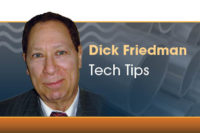What could the recent sale of The Washington Post have to do with PHCP, PVF and HVACR supply houses?
Once you understand who bought the newspaper that brought down a U.S. president and what this individual has accomplished, you will understand the threat he poses to supply houses. You also might get some ideas for enhancing your supply house.
Jeff Bezos, the founder and CEO of Amazon, personally bought the newspaper for some $250 million. Amazon started the much talked about AmazonSupply, which is built for business-to-business commerce and is not exaggerating when it says it offers 750,000 products. Some of these products are sold by PHCP, HVACR and PVF supply houses. Separate from Amazon, it targets unplanned MRO spending and has its own website at
www.AmazonSupply.com.
The connection
Bezos’ “out-of-the-box” thinking and use of technology are clues as to what might happen to the newspaper in the land of gridlock. More importantly, Bezos’ thinking and use of technology can provide lessons for supply houses. Here are a few.
- It may seem farfetched, but in the early days of computers, some supply houses rented time on the company’s computer. Today, the sale of both time and space (e.g., hosting someone else’s website) could easily be arranged, but watch out for security and liability considerations.
- Not so farfetched is the sale of services such as offering same-day delivery of orders placed early in the day for an extra charge. For OEM and industrial accounts, consider offering inventory consigned at customer sites and extra-cost crib and field-trailer management services whereby the supply house is responsible for maintaining the level of inventory.
- Supply houses could offer supply-chain management services to contractors and industrial/commercial customers. In the supply house’s warehouse (for a charge) store products customers own and charge for delivering the products. Using company trucks, pick up products from manufacturers reps and deliver them to jobsites or bring the products to the supply house’s warehouse and then deliver the products.
- When a customer inquires by phone about a product but doesn’t buy it, save that data and save data about customers who browse the website but don’t buy. Of course, save data about purchases. Obtain software that can “mine” all that data to discern patterns of interest, especially for non-purchased products complementary to products the customer has bought.
- When a customer next calls to place an order, display information about those un-purchased complementary products of interest. For customers who have given permission to be sent email ads, send emails about customer-specific products of interest but not purchased, including information about any complementary products already being bought. Don’t forget the U.S. mail. Print and send ads similar to those sent via email.
- For customers and products for which no interest was expressed, use the data about customer purchases to determine which complementary products are not being purchased. Send email or printed ads about these products to those customers. The next time a customer calls to place an order, display information about those un-purchased complementary products.
After all that data mining, give outside salespeople printed lists of complementary products not purchased by their accounts, especially products for which an interest has been expressed. And in Mr. B’s spirit of using technology, don’t print lists. Transfer each list to the salesperson’s tablet and enable the tablet to be used to place orders from the field.
No matter what happens to The Washington Post, there are many ideas that can be borrowed from Mr. Bezos, Amazon.com and AmazonSupply.
Most important, develop the habit of thinking out of the box and using technology to enhance the distributorship and offer new services to customers.




